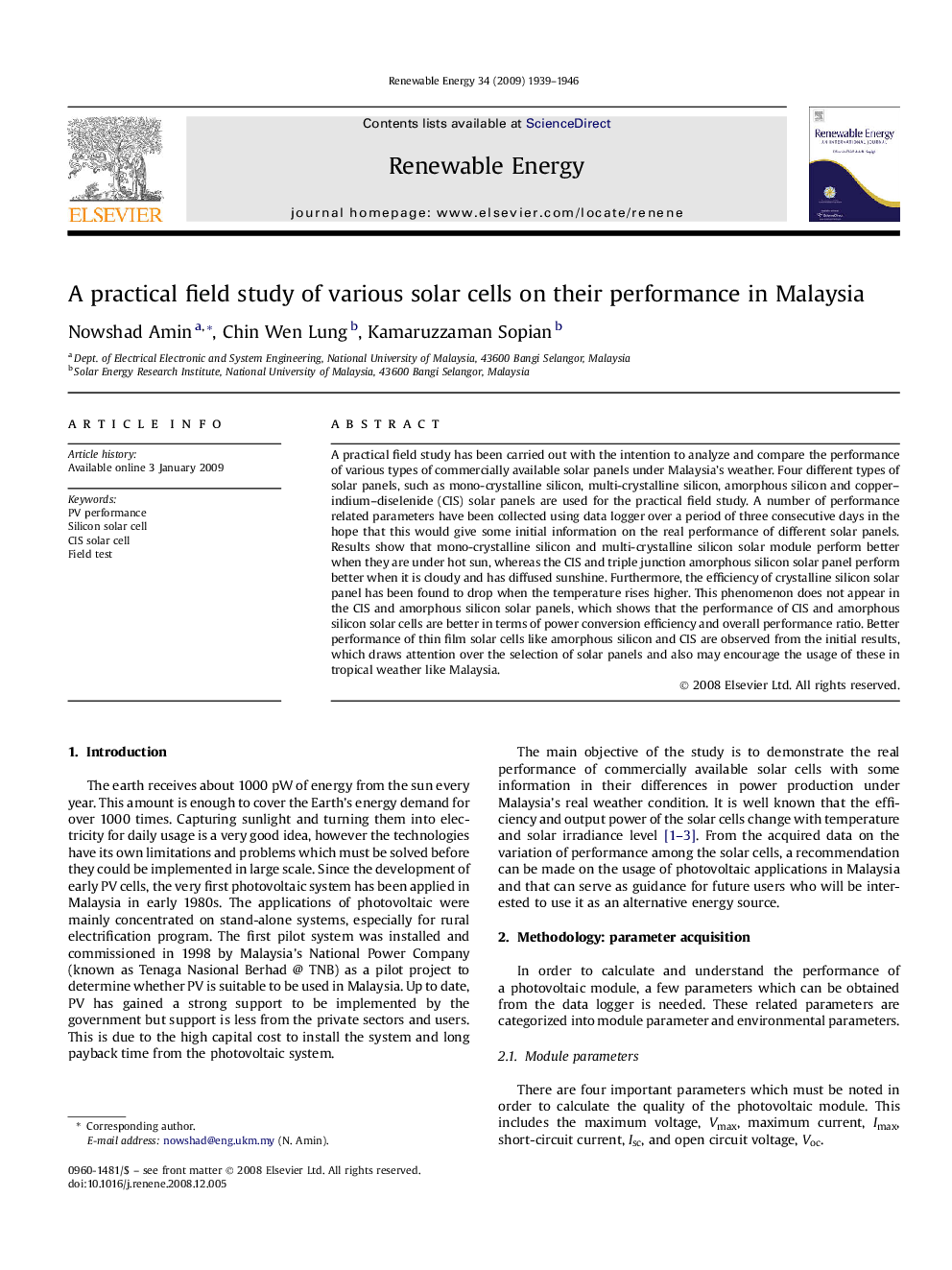| Article ID | Journal | Published Year | Pages | File Type |
|---|---|---|---|---|
| 302331 | Renewable Energy | 2009 | 8 Pages |
A practical field study has been carried out with the intention to analyze and compare the performance of various types of commercially available solar panels under Malaysia's weather. Four different types of solar panels, such as mono-crystalline silicon, multi-crystalline silicon, amorphous silicon and copper–indium–diselenide (CIS) solar panels are used for the practical field study. A number of performance related parameters have been collected using data logger over a period of three consecutive days in the hope that this would give some initial information on the real performance of different solar panels. Results show that mono-crystalline silicon and multi-crystalline silicon solar module perform better when they are under hot sun, whereas the CIS and triple junction amorphous silicon solar panel perform better when it is cloudy and has diffused sunshine. Furthermore, the efficiency of crystalline silicon solar panel has been found to drop when the temperature rises higher. This phenomenon does not appear in the CIS and amorphous silicon solar panels, which shows that the performance of CIS and amorphous silicon solar cells are better in terms of power conversion efficiency and overall performance ratio. Better performance of thin film solar cells like amorphous silicon and CIS are observed from the initial results, which draws attention over the selection of solar panels and also may encourage the usage of these in tropical weather like Malaysia.
